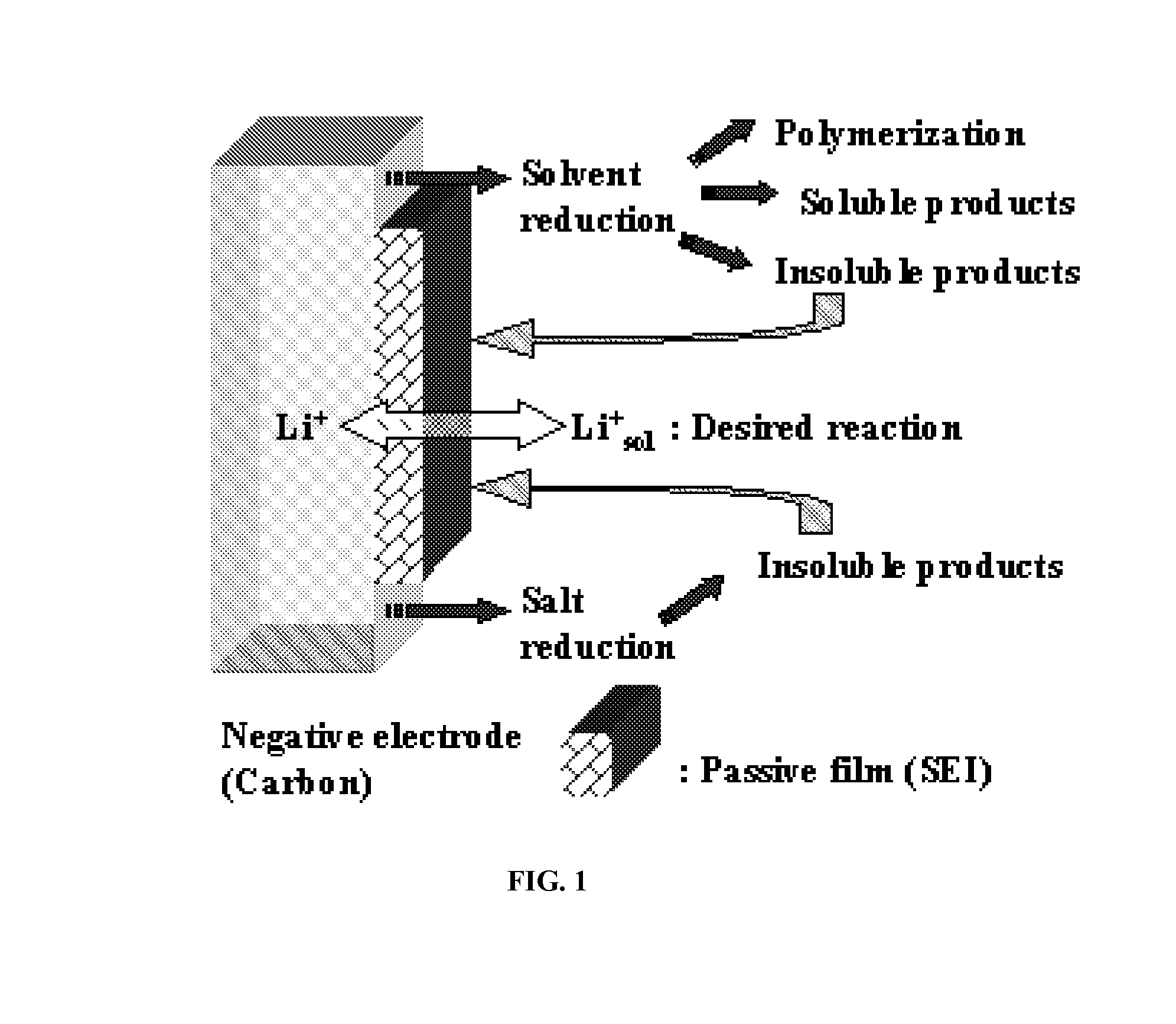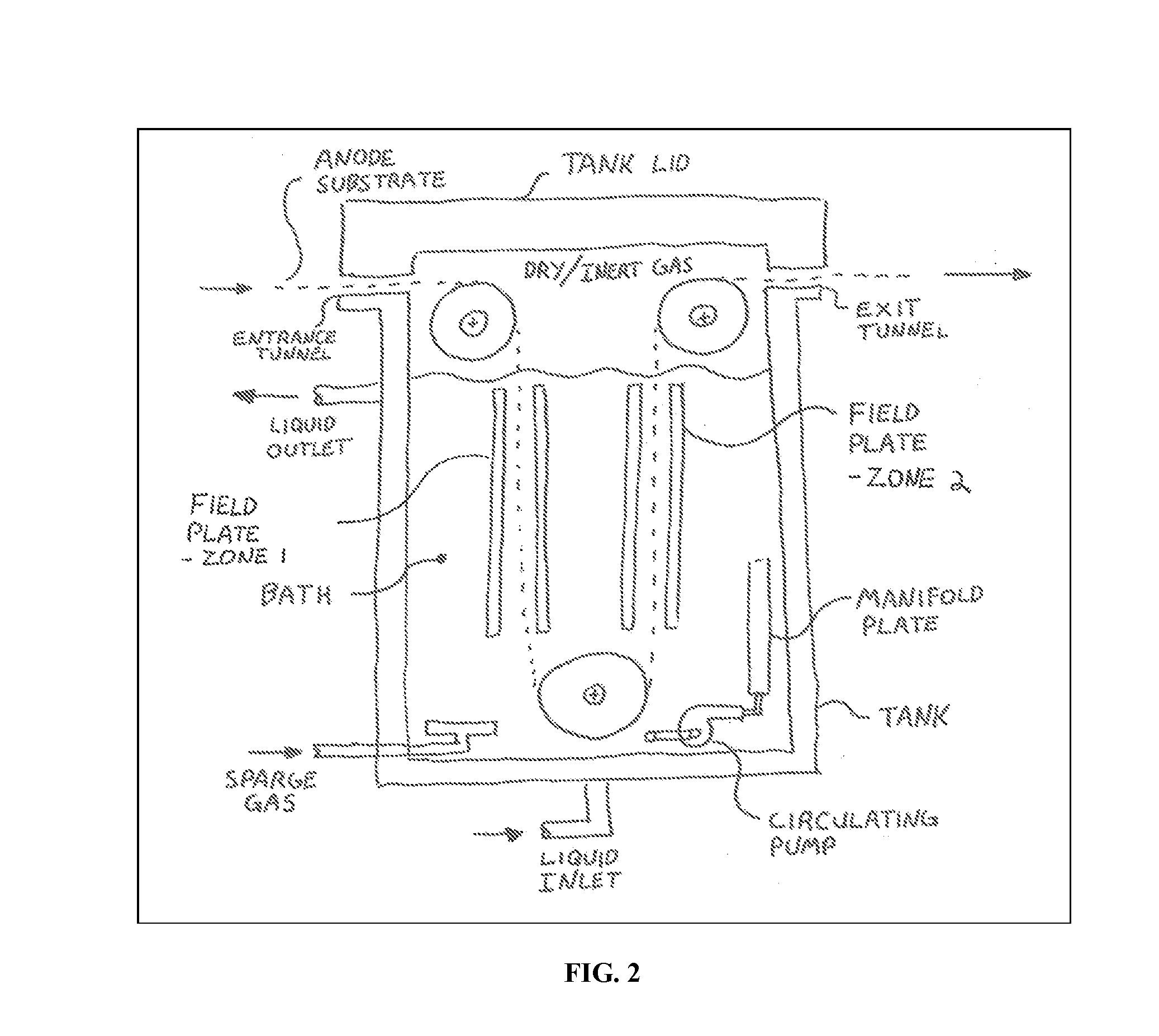Method for alkaliating electrodes
a technology of electrodes and alkali, which is applied in the field of alkaliating electrodes, can solve the problems of inability to achieve satisfactory refinement process, inability to produce low moisture, and inability to meet the requirements of the application of the process, etc., and achieve good to excellent efficiency
- Summary
- Abstract
- Description
- Claims
- Application Information
AI Technical Summary
Benefits of technology
Problems solved by technology
Method used
Image
Examples
examples
[0063]The following is a detailed example of an anode preparation and processing. 25 micron thick copper foil was cleaned with isopropyl alcohol and Kimberly-Clark Kimwipes to remove oil and debris and then dried in air. A solution was prepared by adding 2.1 grams of 1,000,000 weight PVDF powder from Arkema Fluoropolymers Div. to 95 ml of dry NMP solvent from Aldrich Chemical. The solution was mixed with a stir bar overnight to fully dissolve the PVDF material. The solution was kept in the dark to prevent the light sensitive solvent from reacting. 33.9 ml of this PVDF solution was then added to 15 grams of Conoco Philips CPreme G5 graphite and 0.33 grams of acetylene black and stirred for 2 hours in a ball mill at 600 RPM without any mixing balls. The resulting slurry was cast onto the copper foil using a vacuum hold down plate with heating capability. The finished graphite thickness after casting and drying at 120° C. was about 100 microns or 14 mg / cm2. The anode sheet was then die...
example 2
[0066]An NMC cathode is mounted in a half cell containing lithium metal as the negative electrode. The NMC cathode is “charged” to liberate most of its lithium content. This cell is disassembled and the cathode taken out to use as an electrode in the pre-lithiation apparatus that includes the above mentioned GBL and LiCL salt solution including CO2 gas. The NMC cathode is subjected to a reducing current of 1 mA / cm2 with a total dosage of 1 mAhr / cm2. The cathode is then rinsed while held in a small reducing current (0.1 mA / cm2) to inhibit chemical oxidation and then vacuum dried. The cathode is then mounted into a half cell as described earlier and cycled starting with the “charge” step to measure the amount of cycleable lithium that is present. The amount of cycleable lithium can be measured. After the charge step is completed, normal cycling can be performed at a rate of C / 3 between 4.2 volts and 3.0 volts. The half cell capacity can be determined.
[0067]An example of a salt other t...
PUM
| Property | Measurement | Unit |
|---|---|---|
| temperature | aaaaa | aaaaa |
| temperature | aaaaa | aaaaa |
| temperature | aaaaa | aaaaa |
Abstract
Description
Claims
Application Information
 Login to View More
Login to View More - R&D
- Intellectual Property
- Life Sciences
- Materials
- Tech Scout
- Unparalleled Data Quality
- Higher Quality Content
- 60% Fewer Hallucinations
Browse by: Latest US Patents, China's latest patents, Technical Efficacy Thesaurus, Application Domain, Technology Topic, Popular Technical Reports.
© 2025 PatSnap. All rights reserved.Legal|Privacy policy|Modern Slavery Act Transparency Statement|Sitemap|About US| Contact US: help@patsnap.com



